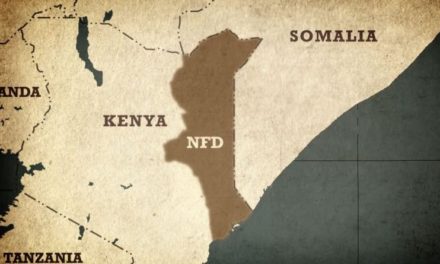ADDIS ABABA, Ethiopia—Former comrades in arms described retired Brig. Gen. Asaminew Tsige, who was shot dead on June 24, as a mediocre soldier and a poor administrator. Asaminew was gunned down by government forces two days after allegedly masterminding the assassination of three senior officials of Ethiopia’s Amhara state, including its president—events labeled part of “an orchestrated coup attempt” by the Ethiopian prime minister’s office.
Asaminew had a long history in Ethiopian military circles—and in rebel movements. He was an ex-rebel fighter in the Ethiopian People’s Democratic Movement in the struggle that in 1991 felled the Derg, a Marxist junta that preceded Ethiopia’s current ruling system. Asaminew met in 2009 with leaders of the banned opposition movement Ginbot 7 in Dubai, according to members of that movement. On April 24, 2009, the National Intelligence and Security Service and Federal Police Joint Anti-Terrorism Task Force arrested 35 people allegedly involved in plotting a coup against Prime Minister Meles Zenawi’s government; most were members of the military or the police. Asaminew was one of them, and he was imprisoned for nearly a decade.
Last February, Asaminew emerged from prison, having allegedly faced solitary confinement and torture, among tens of thousands of prisoners released following a 12-point reform plan handed down by Ethiopia’s ruling politburo in December 2017.
Under Abiy Ahmed, who became Ethiopia’s new leader in April 2018, Asaminew was honorably retired with full pension rights—and he was appointed by Amhara state later that year to head its administration and security bureau. The effort to release and reintegrate former rebels who had once sought to overthrow the federal government was widely hailed as a bold reform effort. But as the high-profile June 22 killings have shown, that policy has also unleashed forces that Abiy may no longer be able to control.
Tremors have already rippled through the Ethiopian National Defense Force (ENDF), the federal army, whose manpower mirrors the ethnic makeup of the country’s ruling coalition and has been increasingly involved in internal peacekeeping amid innumerable conflicts that have over the last year turned Ethiopia into the world’s largest source for internally displaced persons associated with conflict.
Abiy has brokered an anarchic political opening, leading the four branches of the ethnically-based ruling Ethiopian People’s Revolutionary Democratic Front (EPRDF)—Tigrayans, Oromos, Amharas, and ethnic groups from the south—to undertake a grandiose personnel restructuring and rebranding. Asaminew’s own appointment to the Amhara Democratic Party (ADP) central committee in October 2018 was part of that trend.
According to security insiders, Asaminew relied on hardliners affiliated with the Amhara Democratic Forces Movement, who, after returning from Eritrea amid an historic peace deal between the two countries, agreed last November to merge with the ADP. One of his two deputies in the Amhara security bureau, Alehubel Amare, had fled to Eritrea and formed the ADFM with other military defectors after the alleged coup plot of 2009, and another, the retired Brigadier-General Tefera Mamo, had been imprisoned with Asaminew.
Abiy’s intention was, in December 2018, to broker a merger between the ADP (which is part of the EPRDF) and the more radical National Movement of Amhara, or NAMA (which is not). This trend was replicated in Abiy’s native region of Oromia with a planned merger between the Oromo Democratic Front, an opposition movement returning from exile, with Abiy’s own Oromo Democratic Party, which is part of the EPRDF.
Just as the communist nomenklatura in the former Soviet republics survived through adopting nationalist rhetoric when the Soviet Union began to face a crisis due to rising regional nationalism, the EPRDF’s ADP absorbed existing undercurrents of radical Amhara ethnonationalism in an effort to refurbish its damaged credentials by appeasing hard-liners in advance of competitive elections intended for 2020.
This ethnonationalist revival in a federal state has unleashed pre-Derg forces seeking to revive a world of feuding dynasties and provincial lords with their own armies competing for dominance based on who has the most weapons while seeking incorporation of so-called ancestral lands into Amhara state, including irredentist claims in other regional states and even in neighboring Sudan.
Prior to his death, Asaminew was overall commander of Amhara state’s special police forces, police, and militia, over which he had direct influence; he did not have a command role in the ENDF. Such militias historically played a pivotal role in Ethiopia’s internal security during the era of princes, between the 18th and 19th centuries, during which nobles had their own militias from their respective communities to defend their territory and security in the absence of any effective central authority.
They were also present during the Red Terror under the Derg, when so-called people’s militias were established largely from the peasantry and empowered to act against so-called anti-revolutionary individuals and groups. In Amhara state, after the Eritrean-Ethiopian War of 1998-2000, residents of North Gondar and the military and police faced attacks from insurgents linked with Eritrean-supported groups. As a result, militias were increasingly entrusted to operate at the grassroots level as local first responders to lawlessness.
The ADP selected Asaminew to its central committee as part of a pivot toward the incorporation of returning opposition forces. The party’s decision to then crown Asaminew as the head of Amhara state’s administration and security bureau—a role accountable to the regional president and supervising all regional security organs—was seen as a way of absorbing and neutralizing hard-liners. But it ended up fueling a bitter power struggle at the core of a fragmenting EPRDF and threatening the survival of the federal coalition’s constituent branches.
Fractious forms of ethnonationalism are now emerging all across Ethiopia—a country of more than 80 ethnic groups—raising the perilous prospect of a Yugoslav-style breakup.
Mutual animosity between regional states is contributing to a national crisis, with a race to strengthen regional security forces amid rising distrust of federal forces—similar to the distrust of the Serb-dominated Yugoslav National Army by Slovenes and Croats in the early 1990s, as they built up their own territorial defense forces.
As regional nationalism grows, competing irredentist claims are on the rise. One of Amhara state’s borders is with Tigray state. Amhara nationalists want to reclaim the districts of Wolkait and Raya, which they say were annexed to Tigray after the Tigrayan-led EPRDF came to power. Amhara nationalists also want part of Oromia, Al-Fashaga in Sudan, and the federal capital, Addis Ababa—and NAMA labels the EPRDF’s Tigray People’s Liberation Front (which governs Tigray) as a “terrorist group,” according to Christian Tadele, a NAMA politburo member—riling neighboring Tigrayan nationalists.
Source : Nizar Manek




